The 2006 Survey of Wages and Job Trends in the Clinical Trials Industry, sponsored by ConsignMed
Applied Clinical Trials
From stress levels to job satisfaction, ACT's first salary survey provides an inside look at our industry today.
The job market in the industry appears to be holding its own at a time when pharmaceutical companies face pressures from factors such as generics, regulations, and drug safety issues. This past year witnessed many layoffs in major pharmaceutical companies but at the same time there has been growth in the biotech sector as well as in those companies that the pharmaceutical industry outsources to, such as CROs, laboratories, and technology companies. The good news from the Bureau of Labor Statistics is that employment in the biotech and pharmaceutical industries should increase through the year 2012.
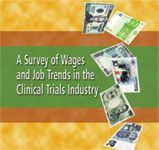
In this first Applied Clinical Trials salary survey we questioned a broad base of our readers in the clinical trials industry. One of the limitations in doing such a broad survey is that we did not delve into any one career direction within the industry. However, we were able to gain insight into the industry by querying over 20 different types of clinical trials professionals.
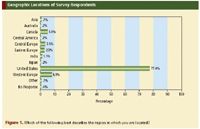
Figure 1. Which of the following best describes the region in which you are located?
Methods
Invitations to participate in our survey were mailed out August 29 through September 6, 2006. All readers who gave ACT permission to use their emails were contacted. Approximately 5729 invitations to participate in the survey were successfully sent. A total of 451 useable responses were received for an overall response rate of 7.9%.
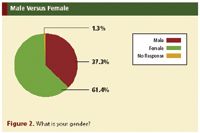
Figure 2. What is your gender?
Respondent profiles
Most of the ACT respondents come from North America, Central America, Asia, Australia, India, Japan, and Central, Eastern, and Western Europe. Eighty-two percent of respondents are from North America and 14% are from the European area. Of the total number of respondents, 61.4% are female and 37.3% are male, with a mean age of 42.3 years. The largest group ranged in age from 45–49 years. Ten percent of respondents are under age 30 and 2% are age 65 and older.
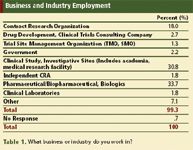
Table 1. What business or industry do you work in?
Respondents indicated their highest educational degree. Almost half of the group (47.7%) hold a postgraduate degree, which include Masters, Doctor of Philosophy (PhD), Doctor of Medicine (MD), and Doctor of Pharmacy (PharmD). It is interesting to note that 57.6% of the group surveyed obtained their highest degree outside the science area; however, the highest percentage of postgraduate degrees were in biology.

Table 2. Which of the following organizations are you a member of?
Respondents were asked to identify the part of the industry they were employed in and 33.7% replied they work in the Pharmaceutical, Biopharmaceutical, and Biologics industry, 30.8% are involved in clinical study and/or with investigative sites, including academia and medical research facilities, and 18% are involved with Contract Research Organizations.
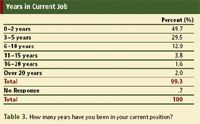
Table 3. How many years have you been in your current position?
Thirty-one percent of respondents list their job title as clinical research associate or clinical research coordinator, and 19% list themselves in upper management positions.
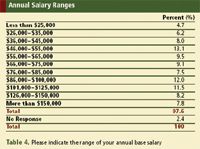
Table 4. Please indicate the range of your annual base salary
All respondents are members of organizations within the clinical trial industry, including the Drug Information Association (DIA), Association of Clinical Research Professionals (ACRP), American Association of Pharmaceutical Scientists (AAPS), The Institute of Clinical Research (ICR), Regulatory Affairs Professional Society (RAPS), American Medical Association (AMA), and the Society of Clinical Research Associates (SOCRA).
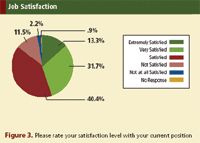
Figure 3. Please rate your satisfaction level with your current position
Employment
Job functions of those queried include clinical supplies (1.1%), academic research (4%), data management (4.2%), IT management (.7%), clinical research associate (12.4%), clinical research coordinator (22.2%), corporate management (8%), QA/QC (7.3%), clinical trials management (14.9%), investigator (.9%), R&D project management (9.8%), and regulatory affairs (4.2%). When queried about work status, 397 of the respondents noted they were employed full time. Of those employed full time, 16.4% work in oncology, 9.3% in the cardiovascular area, and 6% in CNS.
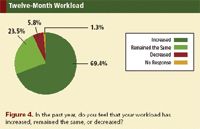
Figure 4. In the past year, do you feel that your workload has increased, remained the same, or decreased?
Overall, the survey indicates that although respondents have worked in the industry for a fair amount of time, they appear to change jobs often within the industry. A little less than half of those queried (49.7%) have been with their current employer for 0–2 years, and 29.5% have been in their current position for 3–5 years.
Salary
Annual base salary varied from $25,000 to more than $150,000 with a median of $73,000. According to respondents, 12% earn between $86,000 and $100,000 and 13.1% earn between $46,000 and $55,000. Within the group that earns $86,000-$100,000, educational degrees ranged from Bachelors through PharmDs. Educational degrees varied from Masters through MDs and PharmDs for respondents who earn from $86,000 to more than $150,000.
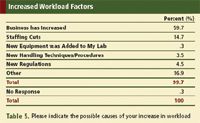
Table 5. Please indicate the possible causes of your increase in workload
Most of the respondents who earn between $100,000 and $150,000 have jobs in upper management, which includes Directors, Senior Scientists, and CEOs.
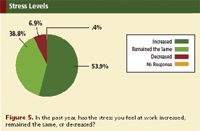
Figure 5. In the past year, has the stress you feel at work increased, remained the same, or decreased?
Of those who earn over $150,000 per year, 45.2% receive supplemental income in the form of a commission or bonus. Median supplemental income is $6799, and 27% of those who earn more than $150,000 receive $15,000 or more in supplemental income per year.

Table 6. Why do you feel that your stress level at work has increased?
When comparing degree, salary, and gender within the $150,000 salary range, 40% of males with a PhD fall into this category, whereas females are at 0%. Within the $101,000–$125,000 range, males were represented at 40% and females at 6.9%.
In reviewing MD degrees, salary, and gender, 10.3% of women earned within the $101,000–$125,000 salary range compared to 0% of males. Moving up the salary scale, male MDs accounted for 29.6% of those earning more than $150,000 per year compared to 12.5% of female MDs. Although there seems to be a disparity in income level between males and females, there may be other factors that influence this discrepancy, such as years of experience, etc.

Figure 6. Are you considering making a job change within the next 12 months?
Job satisfaction
Industry employees appear to be satisfied with their current job positions: 40.4% indicate they are satisfied, 31.7% are very satisfied, and 13.3% are extremely satisfied. When respondents were asked about rating satisfaction in their work place environment, 84.7% indicated that they are satisfied to extremely satisfied, and 80.7% also indicated that they are satisfied with the technology that is needed to perform their work. When asked about their satisfaction level with continuing education to stay current in their field, 68.2% responded that they are satisfied to very satisfied.
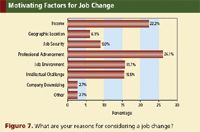
Figure 7. What are your reasons for considering a job change?
Many companies have a policy on employee-attended meetings and external training and development. When employees were asked about their company's policy, 65% indicated that their company pays for meeting and training/development attendance and 14.6% indicated they can take the time to attend meetings but the company does not pay for it.
Workload and stress
When asked if workload has increased, remained the same, or decreased in the past year, 69.4% of respondents noted that their workload has increased. Causes given by respondents for the increase in workload include an increase in business (59.7%) staffing cuts (14.7%), new regulations (4.5%), and new handling techniques and procedures (3.5%).
We asked respondents if they felt the stress at work has increased, remained the same, or decreased in the past year, and 53.9% indicated their stress has increased. According to respondents, reasons for the increase include business uncertainty (12.8%), staff management uncertainty (21.4%), negative workplace attitudes (13.6%), and more stringent procedures (9.9%).
Career change
The 45.6% of respondents who said that they are considering a job change gave the following reasons: professional advancement, income, job environment, intellectual challenge, job security, geographic location, and company downsizing. The two most popular reasons for considering a job change were professional advancement (26.1%) and income (22.2%). A little more than half of the respondents (54.4%) indicated that they are not considering a job change.
Respondents were queried about their career advancement. They indicated that consultant (18%), company executive (18.4%), and lab director/ manager (10.9%) were popular next-step positions. As for the number of years it will take to make their next career step, 43.7% said they anticipate it will take 1–2 years. Additional education and advanced administrative leadership training were what respondents felt they needed in order to advance their careers.
Summary
Overall, most respondents are satisfied with their job positions, although they indicate that the workload has increased. When they noted possible causes for their increasing workload, an increase in business and staffing cuts received the most frequent responses. This appears to be a symptom that is occurring across the job industry. We may well be still feeling the aftermath of the 2001–2003 economic slowdown. The good news is that both pharmaceutical and biotech employment is predicted to increase throughout the year 2012.
Kerri Nelen is associate editor of Applied Clinical Trials, knelen@advanstar.com
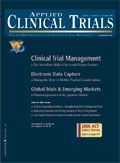
Improving Relationships and Diversifying the Site Selection Process
April 17th 2025In this episode of the Applied Clinical Trials Podcast, Liz Beatty, co-founder and chief strategy officer, Inato, discusses a number of topics around site engagement including community-based sites, the role of technology in improving site/sponsor relationships, how increased operational costs are impacting the industry, and more.
Behind the Buzz: Why Clinical Research Leaders Flock to SCOPE Summit
February 7th 2025In this episode, we meet with Micah Lieberman, Executive Conference Director for SCOPE Summit (Summit for Clinical Ops Executives) at Cambridge Innovation Institute. We will dive deep into the critical role of collaboration within the clinical research ecosystem. How do we bring together diverse stakeholders—sponsors, CROs, clinical trial tech innovators, suppliers, patients, sites, advocacy organizations, investors, and non-profits—to share best practices in trial design, program planning, innovation, and clinical operations? We’ll explore why it’s vital for thought leaders to step beyond their own organizations and learn from others, exchanging ideas that drive advancements in clinical research. Additionally, we’ll discuss the pivotal role of scientific conferences like SCOPE Summit in fostering these essential connections and collaborations, helping shape the future of clinical trials. Join us as we uncover how collective wisdom and cross-industry partnerships are transforming the landscape of clinical research.